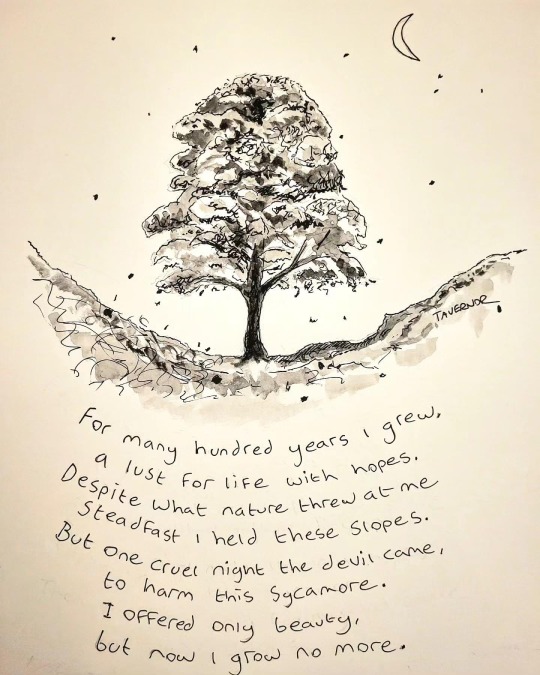#Sycamore gap
Text
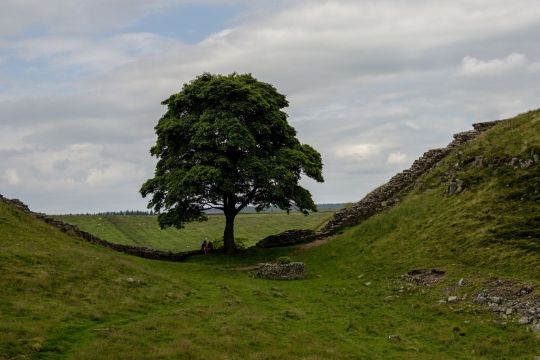
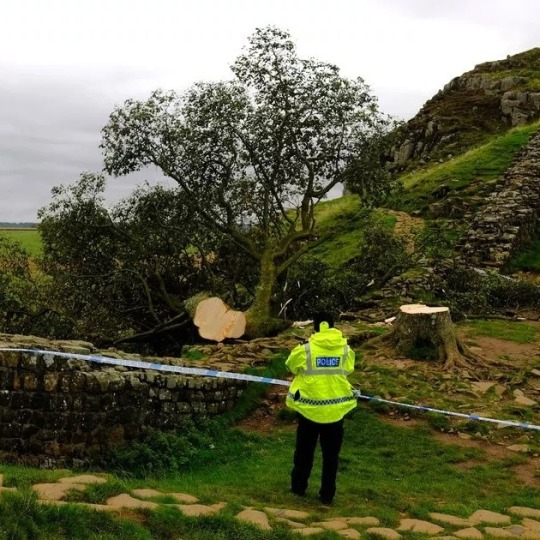
So shocked and upset to learn that our Sycamore Gap tree was deliberately and illegally felled through the night.
(Images: Craig Connor/Newcastle Chronicle and Andre Poling/ullstein bild/Getty Images).
2K notes
·
View notes
Text
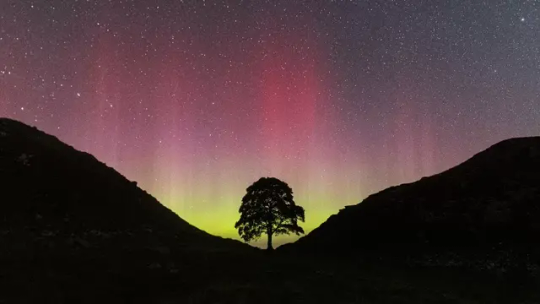
Sycamore Gap, Hadrian's Wall, Northumberland
So sad to learn that our beautiful tree has been vandalised overnight.
1K notes
·
View notes
Text
517 notes
·
View notes
Text
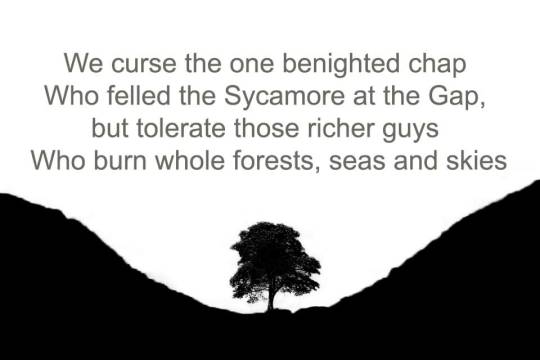
252 notes
·
View notes
Text
All the 'solutions' they put forward for the felled Sycamore Gap tree just make me feel worse when reading them. Which in turn highlights the fragility of nature, and the arrogance and ignorance of people. In terms of the ones who committed the act, that is, not the idea-put-er-forward-ers.
"We'll put a statue in its place!" "We can grow a new one! (but it will take hundreds of years)" "We can turn the leftover wood in to a memorial!"
It just gives me an ultra futile feeling reading those suggestions.
My favourite one though, is from a writer called Robert (no, not me!), who suggests planting an entirely brand new forest somewhere in the UK uplands (which once would have been forested, but were cleared for agriculture at various points through history).
I like that. A whole great big whopping new forest, that's how you start to heal this wound 🌳🌳💚🌳🌳
121 notes
·
View notes
Text
Some absolute cunt has cut down the most iconic tree in my region, probably in England
The sycamore has stood at what's known as Sycmore Gap, the spot where Hadrian's Wall dips from one hill to the next, for around 300 years. It was made famous after featuring in the Kevin Costner Robin Hood movie in 1991 and gets hundreds of visitors a day, even in the middle of winter
Countless people have got engaged there and had their ashes spread at the beloved spot
What was surely the most photographed individual tree in Britain is now gone
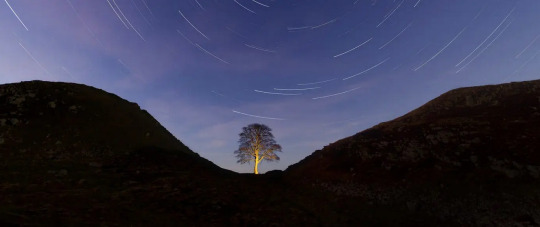
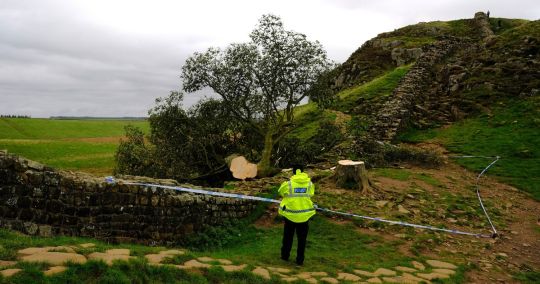

103 notes
·
View notes
Text

Damn they were FAST with updating the marker on Google Earth
#sycamore gap#hadrians wall#tree law#google earth#england#rip tree#I only learned about the tree today and i already greatly miss it
102 notes
·
View notes
Text

Bless the young man who hiked 3 hours to plant a new sycamore tree
#Hadrian's Wall#Northumberland#sycamore gap#twitter post#English countryside#Roman Britain#vandalism#British history#empathy#justice#sapling#rural landscape#felled tree#UK
113 notes
·
View notes
Text

to the sycamore tree gap
#the prompt was good tree#digital art#art#digital drawing#artists on tumblr#illustration#digital aritst#artist#procreate art#sycamore gap#tree#tree art#badtober2023#omatoxin
60 notes
·
View notes
Text

Sycamore Gap, Hadrian's Wall, Northumberland
(C) do not use, edit, reupload.
#you may recognise it from a certain kevin costner film#sycamore gap#hadrian's wall#english countryside#non monster post#ghosti's photography#i found some old photos so i figured i'd share them here for funsies
100 notes
·
View notes
Text
I am absolutely devastated that some fucking gutless vandal has felled the Sycamore Gap. This centuries old tree stood in a dip in Hadrian's Wall and has become one of the most famous and photographed trees in England, in part because of its use in Robin Hood: Prince of Thieves - and now it's gone. It's a fucking tragedy, too, that it was cut down on the very same day that the UK State of Nature report revealed that wildlife of all kinds in the UK is in severe decline.

Here's the Milky Way seen from Sycamore Gap, Hadrian's Wall, in 2022. Photographer: Daniel Monk
43 notes
·
View notes
Text

Image credit: Anita Nicholson / Woodland Trust / National Trust
52 notes
·
View notes
Text
Last Wednesday night, Britain was robbed of one of its best-loved trees. Mike Pratt, the CEO of Northumberland Wildlife Trust, describes the venerable, now-recumbent sycamore at Sycamore Gap on Hadrian’s Wall as a “totem tree; a touch point in the landscape”.
But the tree, standing alone in a national park, also reminded some of how nature-depleted England is. As environmentalist Ben Goldsmith said at the time: “That someone would have destroyed this iconic tree is beyond comprehension; but what’s even more shocking is that this was pretty much the only tree in that entire landscape. Our national parks can and should be so much better.”
According to Northumberland Wildlife Trust’s latest estimates, just 7% of Northumberland meets the criteria needed for the UK government to fulfil its commitment to protect and prioritise 30% of the landscape for nature by 2030 – which is a little higher than the 5% average across England as a whole.
While Goldsmith overstates the case somewhat, low tree cover does partly explain why Northumberland is sometimes called the “land of far horizons”. The most remote and least populated of England’s national parks, its rolling hills are swathed by expansive areas of open moor, peatland, as well as large forestry plantations.
In common with most other national parks in Britain, much of this land is grazed by sheep and cattle. As Pratt explains, over decades and centuries, agriculture has gradually become more intensive, with the result that areas of the national park are now almost devoid of trees and “feel a little bit industrial in parts”, he says. This is not the fault of individual farmers, Pratt argues. “It’s just that no one’s ever made any big decisions about what it should look like, probably since Roman times.”
Now, the felling of the tree at Sycamore Gap has given local communities and land managers a reason to reflect on, and make some serious choices about, how this landscape should look and function in the years to come.
A vision of renewal
From Pratt’s perspective, the corridor of land that roughly follows Hadrian’s Wall, from England’s east coast to west, is “possibly the biggest opportunity for a wilder landscape in England”.
On Wednesday, Northumberland national park authority announced its plans for how one part of that corridor would be renewed, with a new project signalling “a transformative shift towards a nature-first approach to land management”.
The project has been two years in the planning, but unveiling it this week, in the immediate aftermath of loss of the region’s most famous tree, felt like a fitting riposte to that crime. Tony Gates, chief executive of the National Park Authority, explained in a press release that his team decided it was imperative to seize the moment. “We are living through a nature crisis, a climate crisis and a wellbeing crisis,” he writes. “We must use this strength of feeling to drive change, for nature recovery and for our health and wellbeing.”
50 notes
·
View notes
